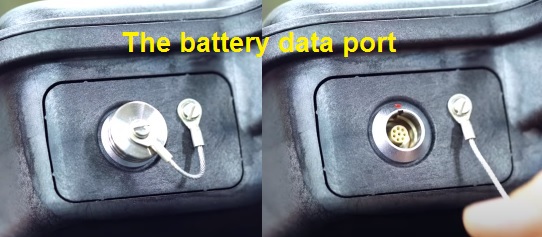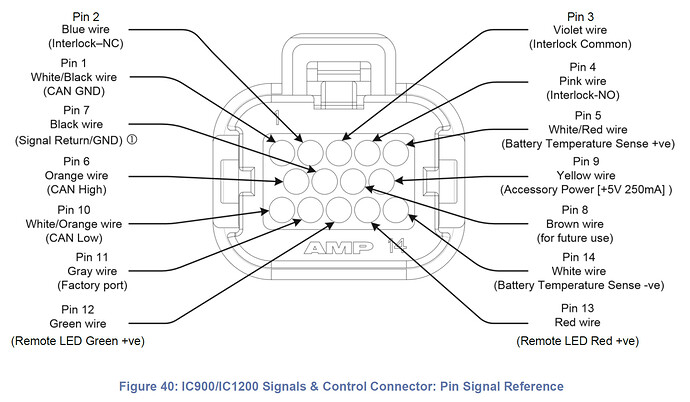Thanks for the informations. I agree, this is a solution BUT that involves some basic deciphering of the CAN messages, and thats where I’m stuck. Sending and receiving messages on the BUS is easy and I’ve been doing so using an arduino. Anyhow, for now I have to fix that pack, then I can let you guys know if the BMS is happy with the fix or still pissed and requires some sweet talking to resume our relationship. fingers crossed!
Yes, it requires some skills but there is another solution for @Theocerbo.
1-The Gordian knot style solution where you get rid of the whole CANxy management system.
The result of the following analysis is that If you replace the original BMS, to be safe at sea, you just have to change the remote as well to be informed of the battery level. No deciphering is needed if the main battery connects directly to a new DiY remote receiver module like Erayfoil, Bluemind, Fero, Volt…
2-The sniffing/deciphering solution:
[DISCLAIMER: do it at your own risk]
Efoiling without battery level sent by the battery to the remote is dangerous especially at sea.
If one wants to get rid of the original battery BMS in an original battery, a possible solution is:
2.1- using a PC connected between a working battery and the electric box over the battery [CANxy] data cable, sniff what’s going on to identify the protocol [CANxy = CAN or CANopen for EV],

2.2- locate the OK code (could be a handshake sequence) [if not encrypted] during startup and during the running phase
2.3- disconnect the battery management cable (data cable) on the battery side and leave the PC connected to the electric box via this cable
2.4- on the PC send the OK code (sequence) to the electric box using a standalone no-name battery.
If the electric box is OK with the generated data sequence, for a few USD, program a microcontroller (Arduino or other) that connects to the electric box data cable to generate the above “OK message”.
To locate the OK message id, then the OK code which could simply be a battery level in the correct range, this is the type of investigation you have to carry out in your sniffer /decipher program:
Anyone knows what voltage a healthy lift battery is showing just measuring with a voltage tester?
ca. 58.8 volts fully charged
Hey Matze,
I’ve asked a friend to measure the voltage and it seems like Lift has solved this quite cleverly, you can’t measure anything anywhere. Not even the open-circuit voltage on the battery 

The switchover/release relay is located in the battery housing and is switched when the control unit is installed and commissioned.
So no chance to use a voltage meter to see whether a failing lift battery has a problem with i.e. BMS or cell voltage drop.
that is correct.
you can also read the battery via the Can Bus when this is not defect
I have already opened 9 pieces.
mostly the BMS is defect
Is quite difficult to get they specific model of BMS, so you just reuse the cells?
In all batteries you opened was Samsung 30Q cells?
Have you done it ? I’m interested in the 8 pin waterproof data port assignment, especially CAN+ and CAN-
were able to repair BMS.
only small components needed to be replaced.
1x MP725-200-FCT-ND, 3x FUSE SMD 2410 SLOW 4A, 2x SMD TVS Diode Unidirektional 400 W 64 V, 1x ODU / G11K0C-P08LFG0-0000, etc.
eight pieces of battery with 196x Samsung INR18650-30Q 3000mAh - 15A
one piece of battery with 196x Samsung INR18650-25R 2500mAh - 20A
Thanks. What about on the battery data port ? Has LIFT given up the round 8 pin connector data port ?
Tool and Howto link.
Usable during charge AND during navigation (should the standard be CAN)
Thank you for the information, but no offense: Sniffing a CAN data stream and finding the “ok message” sounds easy but it reality it’s a bit more complicated. The data stream is encoded in hex format, then if you decode, the IDs and data format is still proprietary to the manufacturer. It’s not written: “Hey its the OK message” it needs skills to basically figure out how all this is encoded. I attached a file above with the CAN data feed in hex format, just use that if you want to take a crack at it, it’s all you need to decipher the Lift data stream if you really want to. On my end, I will fix the battery by replacing the cells and see how the BMS behaves after that.
Also regarding sniffing the CAN data stream, keep it cheap and simple: an Arduino and a MCP2515 module will do just fine, if you need to log stuff during your ride, just add a SD card module and log on it.
Good luck!!
Has anyone figured out how to do a battery repair yet? I have a battery with bad cells that gets like 15 minutes of charge. Lift replaced it (new battery is also acting up) and my warranty is coming up…
Really hoping to hear someone is able to repair the batteries!
No one will guarantee the repair, thats why lift replaces the entire battery if its still under guarantee.
Seems like @Matze has succeeded. If you want to use the battery in a non LIFT board, you could remove the BMS and replace the remote including the receiver. Then, providing you locate the faulty cells, depending on the age of the battery, it is not recommended to mix “old” cells with a couple of new ones.
where did you get the bms? Im trying to find one
any chance your interested in looking at my BMS if I mail and pay for your time to repair?
hi, did you ever figure out bms repair, i have my batt cut apart, and charged up all cells, but getting fault each time i start bms, sometimes it even charges for a split second. Figure out any testing, or repair for the unit itself? I have run though most of the data on these treads, but reached too many rabbit holes and not a real lead on that info.
Has anybody found a decent plug solution to connect to the battery case, preferably waterproof ?
Whether using the native German ODU Lamtac solution… or not…
https://eu.mouser.com/ProductDetail/ODU/S11K0C-P08MFG0-5000?qs=lc2O%252BfHJPVZsoYYZLF%2F3nQ%3D%3D
